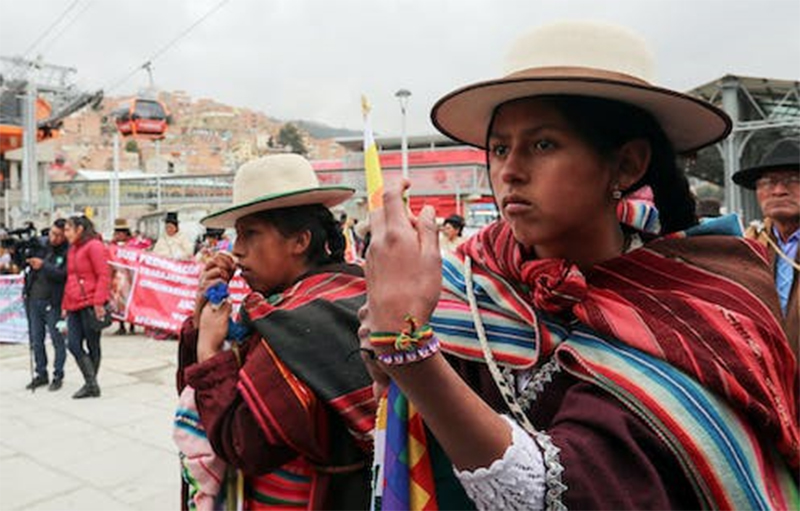By Iván Paredes Tamayo
For years, the Tacana Indigenous people in the Bolivian Amazon have warned of dire environment impacts from oil exploration activities in their forests, located in Madidi National Park and Manuripi Nature Reserve. These activities are grounded in two executive orders, known as supreme decrees, issued in 2015 and 2022, which environmental activists and scientists say pose a direct blow to Bolivia’s protected areas by opening up parks for oil exploitation.
In May 2015, then-president Evo Morales issued Supreme Decree 2366, authorising oil activity on 24 million hectares (59 million acres) of land, or around 22% of Bolivia’s territory — including national parks. Prior to this, the country had never allowed companies to explore and exploit within these key ecosystems.
The journalism alliance ManchadosXelPetróleo has now found that oil exploration blocks currently overlap with 21 of the 53 national and subnational protected areas located in Bolivia’s Amazonian region, some of them entirely.
New territory for oil companies
When Supreme Decree 2366 was promulgated, negotiations began immediately with transnational companies to parcel out the blocks in the new oil frontier.
According to the Friends of Nature Foundation (FAN), a Bolivian organisation that works on natural heritage conservation, the total area of oil blocks in the country’s Amazonian region has more than doubled since then. A geospatial analysis that it carried out with the Amazon Network of Georeferenced Socio-Environmental Information (RAISG) showed the area allocated for oil blocks in the rainforest between 2012 and 2020 went from 7.3 million hectares to 15.7 million hectares (18 million acres to 38.7 million acres), accounting for a total of 76 blocks.
That’s more than half of the total area of oil blocks nationwide, which cover 28.3 million hectares (70 million acres). According to FAN, 27% of Bolivia’s protected areas are now at risk due to oil activity.
“All the new regulations open the door to territories where hydrocarbon activities have not usually been carried out, such as protected areas, whether national or subnational,” Marlene Quin-tanilla, director of research and knowledge sciences at FAN, told Mongabay Latam.
Jorge Campanini, a researcher at the Bolivian Documentation and Information Center (CEDIB), said nearly 17% of the land administered under SERNAP, the National Protected Areas Service, “is now an area of extractivism or where oil activities are carried out.”
According to a CEDIB investigation, 75% of Bolivia’s natural parks and integrated management areas overlap with oil concessions held by Spanish company Repsol, Brazilian state-owned company Petrobras, and the Bolivian-Venezuelan joint venture PetroAndina. The most affected protected areas in the Amazon region are Amboró and Madidi national parks, Isiboro Sécure National Park and Indigenous Territory (TIPNIS), and Pilón Lajas Biosphere Reserve.
The pressure on the Amazon region increased in February this year, when another executive order, Supreme Decree 4667, which issued, identifying new areas, mostly in the Amazon, for oil and gas exploration. (news.mongabay.com)

